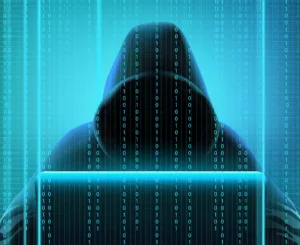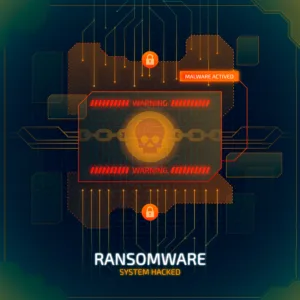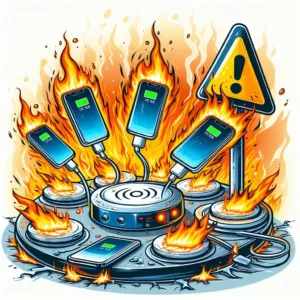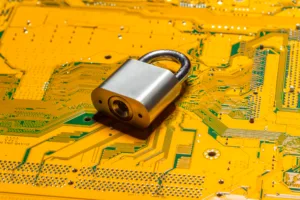
Table of Contents
Introduction
In recent years, the cybersecurity landscape has witnessed a surge in a particularly insidious form of cyberattack known as “wiper-war attacks.” These attacks, characterized by their destructive nature, pose a significant threat to organizations and individuals alike.
As technology advances and threat actors become more sophisticated, it is crucial to understand the intricacies of these attacks, their potential impacts, and how to effectively mitigate the risks they present.
What are Wiper-War Attacks?
It also referred to as destructive cyberattacks, are malicious campaigns designed to inflict maximum damage to a target’s systems, networks, and data. Unlike traditional cyberattacks aimed at stealing information or disrupting operations, wiper-war attacks are primarily focused on destruction, rendering the targeted infrastructure inoperable and causing significant financial and reputational harm.
Top Driving Factors
1. Geopolitical Tensions: Heightened geopolitical tensions between nations have led to an increase in state-sponsored cyberattacks, with wiper-war attacks being favored for their ability to cause widespread disruption and sow chaos.
2. Ransomware Evolution: Ransomware operators have evolved their tactics, leveraging wiper capabilities to increase pressure on victims to pay ransom demands. This convergence of ransomware and wiper techniques amplifies the impact on targeted organizations.
3. Availability of Tools and Techniques: The proliferation of sophisticated hacking tools and techniques in underground forums makes it easier for cybercriminals to orchestrate wiper-war attacks with minimal resources and expertise.
4. Lack of Preparedness: Many organizations lack adequate cybersecurity measures and incident response plans to defend against and mitigate the effects of wiper-war attacks, making them attractive targets for malicious actors.
Potential Impacts
The consequences of wiper-war attacks can be severe and far-reaching:
1. Operational Disruption: Wiper-war attacks can disrupt critical business operations, leading to downtime, loss of productivity, and revenue.
2. Data Loss: The destruction of data resulting from these attacks can have significant implications for business continuity, compliance, and customer trust.
3. Reputation Damage: Organizations targeted by wiper-war attacks often suffer reputational damage, eroding stakeholder confidence and impacting long-term viability.
4. Financial Loss: The financial costs associated with recovering from wiper-war attacks, including remediation efforts, legal fees, and regulatory penalties, can be substantial.
Preventive Measures
To effectively defend against wiper-war attacks and minimize their impact, organizations should adopt a proactive cybersecurity posture and implement the following preventive measures:
1. Cybersecurity Awareness Training: Educate employees about the risks associated with wiper-war attacks and provide training on identifying suspicious emails, links, and attachments to prevent successful infiltration.
2. Patch Management: Regularly update software, applications, and operating systems to address known vulnerabilities that could be exploited by threat actors to launch wiper-war attacks.
3. Network Segmentation: Implement network segmentation to isolate critical systems and data from potential threats, limiting the lateral movement of attackers within the infrastructure.
4. Access Control: Enforce the principle of least privilege to restrict access to sensitive resources and ensure that only authorized personnel have the necessary permissions to perform their job functions.
5. Data Backups: Maintain regular backups of critical data and systems to facilitate timely recovery in the event of a wiper-war attack. Store backup data offline or in a secure, isolated environment to mitigate cyber-attacks.
6. Incident Response Planning: Develop and regularly test an incident response plan tailored to address wiper-war attacks, outlining roles, responsibilities, and procedures for detecting, containing, and mitigating the effects of such incidents.
7. Threat Intelligence Monitoring: Utilize threat intelligence feeds and security monitoring tools to identify and respond to indicators of compromise associated with wiper-war attacks in real-time.
8. Collaboration and Information Sharing: Engage with industry peers, government agencies, and cybersecurity communities to share threat intelligence, best practices, and lessons learned from wiper-war attack incidents.
Conclusion
Wiper-war attacks represent a significant and evolving threat to organizations across various sectors. By understanding the motivations behind these attacks, recognizing their potential impacts, and implementing robust preventive measures, organizations can effectively mitigate the risks posed by wiper-war attacks and safeguard their assets, reputation, and resilience in the face of cyber threats.
Vigilance, preparedness, and collaboration are essential in combating this growing menace in the digital age.
Read more on https://cybertechworld.co.in for insightful cybersecurity related content.




















Thanks for sharing. I read many of your blog posts, cool, your blog is very good.
Wow, this article is mind-blowing! The author has done a fantastic job of conveying the information in an compelling and informative manner. I can’t thank him enough for sharing such priceless insights that have definitely enriched my awareness in this subject area. Bravo to him for producing such a masterpiece!